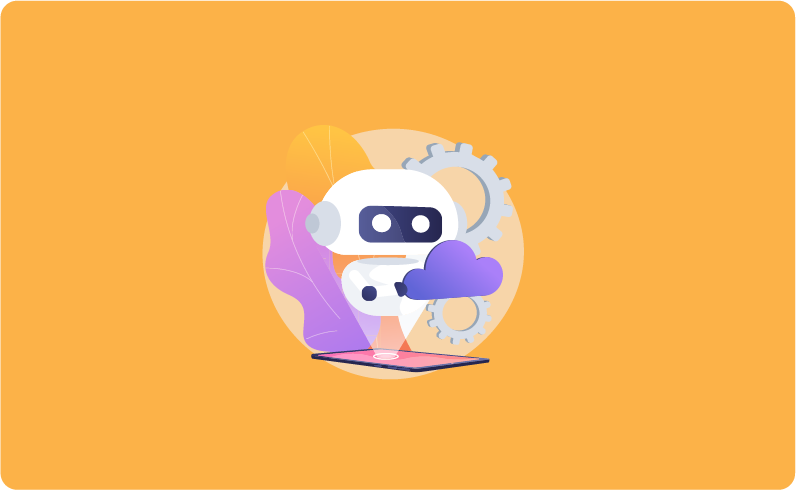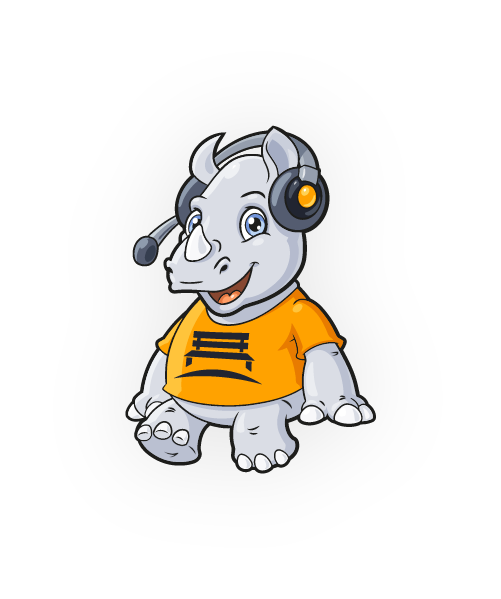The landscape of customer support is rapidly transforming, and chatbots have emerged at the forefront of this shift. From providing quick answers to FAQs to integrating with CRMs, chatbots have become more intelligent and more crucial for top-tier customer service. However, failure to adapt to these innovations can have dire consequences for enterprises. Let’s delve into the 6 groundbreaking chatbot trends of 2023 and explore the potential pitfalls of neglecting them.

Six secrets behind the best support chatbot implementations
1. Human-AI Collaboration is Key
The successful chatbot implementations are those that seamlessly combine the efficiency of AI with the human touch.
The New Hybrid Approach:
Many leading companies now use a strategy where chatbots handle the initial interactions and efficiently route more complex inquiries to human agents. According to a PwC report, 75% of customers still want to interact with a human, even as the technology improves. This hybrid model ensures efficiency while maintaining the trust and warmth of human interaction.
Tailored Human Hand-offs:
It’s not just about handing off, but how it’s done. For instance, using cues from a chatbot conversation to provide human agents with context can enable a smoother transition and faster resolution.
Feedback Loop:
Integrating feedback mechanisms where human agents can correct or train chatbot responses ensures that the bot becomes smarter over time. After all, the key is continuous learning and adaptation.
2. Deep Data Integration Enhances Personalization
Today’s top chatbot systems deeply integrate with other enterprise data systems, making each interaction more personal and informed.
One-view Customer Profiles:
Integrating chatbots with CRM systems like Salesforce allows bots to pull in customer histories, preferences, and even buying behaviors. A Forrester study showed that 80% of companies believe they deliver “super experiences,” but only 8% of customers agree. Access to comprehensive data can bridge this gap.
Proactive Support:
By analyzing user data, bots can proactively address potential issues or offer tailored advice before a customer even raises a concern. This approach not only prevents issues but delights the customer by showing them you’re one step ahead.
Enhanced Security:
Deep integration requires robust security. Systems like Supportbench’s role-based security ensure that while bots have access to data, they only pull what’s necessary and always within compliance.
3. Emotionally Intelligent Bots Make a Difference
Beyond the usual sentiment analysis, the most innovative chatbots now recognize emotional cues and adjust responses accordingly.
Beyond the Words:
Research by Gartner indicated that emotionally intelligent bots can increase customer satisfaction by 33%. This means detecting frustration, joy, confusion, and more from user interactions.
Tailored Responses:
Depending on the detected emotion, the bot can adjust its tone, response speed, or even the type of information it provides. If a customer is frustrated, a more empathetic response is triggered.
Training with Diverse Scenarios:
The best bots are those trained with diverse emotional scenarios. Platforms that leverage the power of AI, like Chatgpt’s inherent capabilities in Supportbench, are able to derive and understand emotional cues more effectively.
4. Focus on Continuous Improvement through Analytics
A chatbot is only as good as its last interaction. Continuous improvement, driven by comprehensive analytics, sets the best bots apart.
Understanding Fail Points:
Analytics can spotlight where bots often fail or where human agents are frequently required, indicating areas of improvement.
Benchmarking Performance:
As quoted by industry leader, Bill Gates, “We always overestimate the change that will occur in the next two years and underestimate the change that will occur in the next ten.” Regular benchmarking helps companies stay ahead and measure bot efficiency.
Custom Surveys and Feedback:
Systems that incorporate custom surveys, much like Supportbench’s feature, can gain direct customer feedback on chatbot interactions, adding another layer of data for improvement.
5. Chatbots are More than Just Text
Leading chatbot implementations have moved beyond text-only interactions, offering multimedia support.
Multimedia Responses:
Bots can now share images, GIFs, videos, or even documents as part of their responses. This is especially crucial when guiding users through complex processes.
Voice Integration:
As voice search and command become ubiquitous, leading bots integrate voice capabilities, catering to a broader audience and offering users their preferred mode of interaction.
Seamless Experience:
Much like Supportbench’s email editor, which offers an Outlook-like experience, the transition between textual and multimedia should feel intuitive and user-friendly.
6. Empower Customers Through Self-service Options
Today’s customers value autonomy. Offering them the ability to solve their issues through chatbots empowers them and reduces support overhead.
Knowledge Base Integration:
Bots that can pull in articles, how-tos, and FAQs from a company’s knowledge base can immediately address user queries. A chat
From AI-powered responses to seamless integration into complex support ecosystems, the best support chatbot implementations are redefining how businesses interact with their customers. But not every company is taking advantage of the benefits of this, to their detriment. And, in today’s hyper-competitive business environment, delivering subpar customer support can be a company’s undoing. To thrive and foster lasting customer relationships, businesses must leverage the best chatbot implementations or risk becoming obsolete in a world where customer experience is paramount. And these chatbot implementations have layered and massively impactful benefits:
1. Emotional Intelligence & Sentiment Analysis
Modern chatbots are no longer limited to responding based on keywords. With emotional intelligence and sentiment analysis, they gauge the mood of the customer, providing personalized, empathetic responses. This can significantly increase customer satisfaction and retention. But, without emotion-aware chatbots, businesses run the risk of delivering robotic, unsatisfactory interactions, leading to increased customer churn. A support solution lacking this feature shows an inability to prioritize personalizing the customer experience.
2. Proactive Problem Solving
The best chatbots now anticipate user issues before they arise. By analyzing user behavior and data patterns, they can predict potential questions or problems and proactively provide solutions. Companies that fail to implement proactive chatbots may find themselves constantly in reactive mode, which is both inefficient and frustrating for users. A reactive approach indicates short-sightedness and a lack of innovation in a company’s support strategy. An issue left unattended that could end up being fatal.
3. Seamless Integration with Support Ecosystems
Modern chatbots effortlessly integrate into broader support ecosystems, pulling information from various sources to provide comprehensive responses. Failing to integrate chatbots into the larger support ecosystem can lead to disjointed customer experiences and redundant efforts. A lack of integration reveals a company’s inability to create cohesive and streamlined customer support processes. This could be a very costly mistake.
4. Continuous Learning and Adaptation
Today’s chatbots use advanced machine learning to continuously improve their responses based on feedback and interactions, ensuring their answers become more accurate and relevant over time. Companies not employing self-learning chatbots will offer stagnant, outdated interactions, leading to reduced customer trust. Ignoring continuous learning suggests a company’s reluctance to evolve and adapt to the changing needs and preferences of its customers. How in the world can you encourage a high-value client to renew or refer you when you can’t clearly identify what they want or need?
5. Advanced Personalization Capabilities
Building on customer data, chatbots can offer individualized solutions and product recommendations, increasing upsell opportunities and personalizing the user journey. By neglecting advanced personalization, businesses miss out on potential revenue and risk alienating customers with generic interactions. Failing to prioritize personalization is a clear sign that a business isn’t maximizing the potential of its customer data. And in the realm of Customer Support and Experience, personalization and data are key.
The Bigger Picture
Ignoring these chatbot trends can be catastrophic. Beyond the immediate repercussions, there’s an underlying issue: a company not investing in these implementations is likely using a fundamentally flawed support solution. This implies stagnation, a lack of foresight, and an inability to prioritize customer experience.
Supportbench has recognized the power of chatbots and seamlessly integrates them to ensure that businesses deliver top-tier support experiences. Emphasizing innovation, personalization, and proactive problem-solving, the platform sets a standard for what customer support should look like in the modern age.











